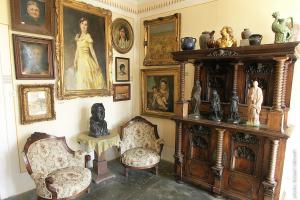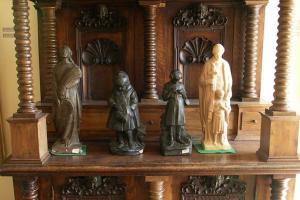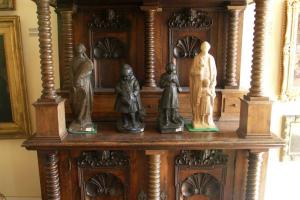From the “Fireplace Room” to the left we enter the “Radio Room”. Facing us stands the marble life-size nudity of Shamefaced (19239) shyly covering her face with her hands and turning it away from the onlooker, the sculptor who is watching her. On the other side we meet another pirobazalt bust on a table. It is the black portrait of Emperor Nero, who was famous for his cruel persecution of Christians. However, Bory didn’t create the madman as many people think of him. Its pouchy eyes which are looking at us from the fleshy face show us that he liked pleasure and he was ambitious and satisfied with himself and his power; also the laurel adorning his bald head refers to this. As the family remembers Bory actually shaped a brick manufacturer who looked very much like Nero.
In front of the back wall there is an array of small figurines in a beautiful eclectic dresser with nice columns. Leaving the room it is worth stopping at the wall by the door where we can see several pictures of the Bory collection: the wonderful blue and green, steamy water of the Balaton by István Csók (1865-1961) and a composition by Miksa Reismann Károly, who travelled a lot, showing the legendary Sicilian Taormina. Dezső Raksányi’s painting of Jenő Bory’s studio in its original function can be seen here too.
Next to the door we find two paintings of their twin daughters by Bory’s wife; Ilona Bory in a yellow dress and next to it a portrait of her twin sister Klára.




